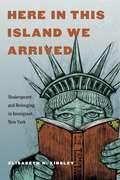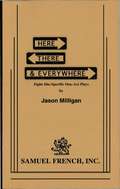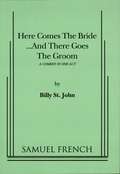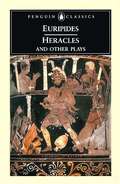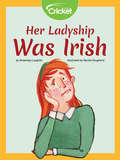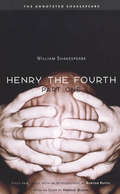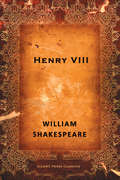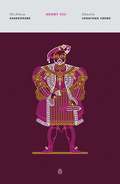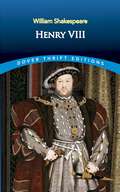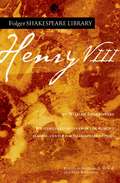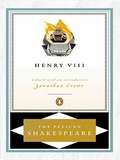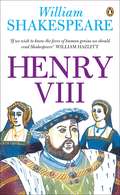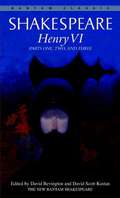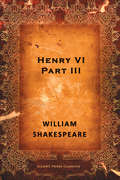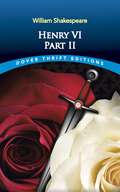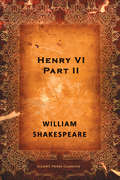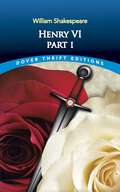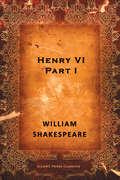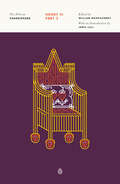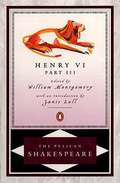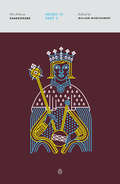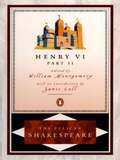- Table View
- List View
Here in This Island We Arrived: Shakespeare and Belonging in Immigrant New York
by Elisabeth H. KinsleyIn this book, Elisabeth H. Kinsley weaves the stories of racially and ethnically distinct Shakespeare theatre scenes in late nineteenth- and early twentieth-century Manhattan into a single cultural history, revealing how these communities interacted with one another and how their work influenced ideas about race and belonging in the United States during a time of unprecedented immigration.As Progressive Era reformers touted the works of Shakespeare as an “antidote” to the linguistic and cultural mixing of American society, and some reformers attempted to use the Bard’s plays to “Americanize” immigrant groups on Manhattan’s Lower East Side, immigrants from across Europe appropriated Shakespeare for their own ends. Kinsley uses archival material such as reform-era handbooks, theatre posters, playbills, programs, sheet music, and reviews to demonstrate how, in addition to being a source of cultural capital, authority, and resistance for these communities, Shakespeare’s plays were also a site of cultural exchange. Performances of Shakespeare occasioned nuanced social encounters between New York’s empowered and marginalized groups and influenced sociocultural ideas about what Shakespeare, race, and national belonging should and could mean for Americans.Timely and immensely readable, this book explains how ideas about cultural belonging formed and transformed within a particular human community at a time of heightened demographic change. Kinsley’s work will be welcomed by anyone interested in the formation of national identity, immigrant communities, and the history of the theatre scene in New York and the rest of the United States.
Here in This Island We Arrived: Shakespeare and Belonging in Immigrant New York
by Elisabeth H. KinsleyIn this book, Elisabeth H. Kinsley weaves the stories of racially and ethnically distinct Shakespeare theatre scenes in late nineteenth- and early twentieth-century Manhattan into a single cultural history, revealing how these communities interacted with one another and how their work influenced ideas about race and belonging in the United States during a time of unprecedented immigration.As Progressive Era reformers touted the works of Shakespeare as an “antidote” to the linguistic and cultural mixing of American society, and some reformers attempted to use the Bard’s plays to “Americanize” immigrant groups on Manhattan’s Lower East Side, immigrants from across Europe appropriated Shakespeare for their own ends. Kinsley uses archival material such as reform-era handbooks, theatre posters, playbills, programs, sheet music, and reviews to demonstrate how, in addition to being a source of cultural capital, authority, and resistance for these communities, Shakespeare’s plays were also a site of cultural exchange. Performances of Shakespeare occasioned nuanced social encounters between New York’s empowered and marginalized groups and influenced sociocultural ideas about what Shakespeare, race, and national belonging should and could mean for Americans.Timely and immensely readable, this book explains how ideas about cultural belonging formed and transformed within a particular human community at a time of heightened demographic change. Kinsley’s work will be welcomed by anyone interested in the formation of national identity, immigrant communities, and the history of the theatre scene in New York and the rest of the United States.
Here Comes the Bride... and There Goes the Groom
by Billy St. JohnComedy / 7f / Interior / When Millie Compton's fiance bolts from the altar, she rushes into the church dressing room in tears. She is joined by her sister (the matron of honor), her mother and grandmother and her best friend (a bridesmaid). Unable to fathom Pardue's flight, they admit his mother and sister, also a bridesmaid, who are equally bewildered. Consolation turns to recrimination as the mothers take each other on in a purse-smacking fight. Hilarity gives way to a happy ending when Pardue calls to confess that prenuptial nerves sent him dashing to the men's room to be sick, but now the wedding can go on.
Heracles and Other Plays
by EuripidesHeracles/ Iphigenia Among the Taurians/ Helen/ Ion/ Cyclops: Of these plays, only 'Heracles' truly belongs in the tragic sphere with its presentation of underserved suffering and divine malignity. The other plays flirt with comedy and comic themes. Their plots are ironic and complex with deception and elusion eventually leading to reconciliation between mother and son in 'Ion', brother and sister in 'Iphigenia', and husband and wife in 'Helen'. The comic vein is even stronger in the satyric'Cyclops' in which the giant's inebriation and subsequent violence are treated as humorous. Together, these plays demonstrate Euripides' challenge to the generic boundaries of Athenian drama.
Her Ladyship Was Irish
by Rosemary LaughlinMary’s class is putting on a production of a play called Her Ladyship Was Irish. Mary is excited to be the stage manager, but she's nervous about how the other students' behavior will affect the show. As they put the show together, Mary learns about judging others and working as a team.
Henry the Fourth, Part One
by William ShakespeareWhile England is threatened by the Earl of Northumberland, Young Prince Hal cavorts in London's taverns, accompanied by the dissolute, entertaining Falstaff and his band of rogues. Much of this play's tension involves Prince Hal and Falstaff, as the former tries to live up to his duties and responsibilities. In creating Falstaff Shakespeare gave us one of the theater's most enduring and memorable characters.
Henry VIII: The Famous History of the Life of King Henry the Eighth, A Tragedy
by William ShakespeareKing Henry VIII risks both his realm and his immortal soul when he divorces Katherine of Aragon in favour of Anne "Bullen". With a cast of characters that includes Cardinal Wolsey, Thomas Cranmer, the dukes of Norfolk and Suffolk, and Sir Thomas Cromwell, Shakespeare explores one of the most fascinating periods in English history, which was still shaping and influencing his world under Henry's daughter, Elizabeth I.
Henry VIII: The Famous History Of The Life Of King Henry The Eighth, A Tragedy (The Pelican Shakespeare)
by William Shakespeare Stephen Orgel A. R. Braunmuller Jonathan CreweThe acclaimed Pelican Shakespeare series edited by A. R. Braunmuller and Stephen Orgel The legendary Pelican Shakespeare series features authoritative and meticulously researched texts paired with scholarship by renowned Shakespeareans. Each book includes an essay on the theatrical world of Shakespeare’s time, an introduction to the individual play, and a detailed note on the text used. Updated by general editors Stephen Orgel and A. R. Braunmuller, these easy-to-read editions incorporate over thirty years of Shakespeare scholarship undertaken since the original series, edited by Alfred Harbage, appeared between 1956 and 1967. With definitive texts and illuminating essays, the Pelican Shakespeare will remain a valued resource for students, teachers, and theater professionals for many years to come. For more than seventy years, Penguin has been the leading publisher of classic literature in the English-speaking world. With more than 1,800 titles, Penguin Classics represents a global bookshelf of the best works throughout history and across genres and disciplines. Readers trust the series to provide authoritative texts enhanced by introductions and notes by distinguished scholars and contemporary authors, as well as up-to-date translations by award-winning translators.
Henry VIII: The Famous History Of The Life Of King Henry The Eighth, A Tragedy (Dover Thrift Editions)
by William ShakespeareThe portrait of a monarchy in crisis, this historical drama concerns the famous king's efforts to secure a divorce from his dignified and popular queen in order to marry an enchanting courtesan and produce a male heir. The play ranks among Shakespeare's most sumptuous and spectacular works, offering a splendid pageant of masques and royal ceremony. Occasional lapses in historical accuracy are compensated for by keen psychological and political insights, vivid characterizations, and evocative language.Possibly the last of Shakespeare's dramas, Henry VIII was almost certainly co-written with John Fletcher. It is a play of farewells - to the world, to life, to power - in which major historical characters make memorable exits, including Cardinal Wolsey's rueful observation: "Had I but served my God with half the zeal/I served my king, he would not in mine age/Have left me naked to mine enemies." Nevertheless, the play ends in triumph and hopeful expectations with the prophecy of the coming Elizabethan age.
Henry VIII (Folger Shakespeare Library)
by William Shakespeare Paul Werstine Barbara MowatIn Henry VIII, Shakespeare presents a monarchy in crisis. Noblemen battle with Lord Chancellor Cardinal Wolsey, who taxes the people to the point of rebellion. Witnesses whom Wolsey brings against the Duke of Buckingham claim he is conspiring to take the throne, yet Buckingham seems innocent as he goes to his death. Henry is also without a male heir. After meeting the beautiful Anne Bullen, he says that he suspects his current marriage to Katherine, with whom he has one surviving daughter, is invalid. Katherine, meanwhile, glows with such splendid integrity that actresses have long desired the role. She advocates for the people, suspects the witnesses against Buckingham, and eloquently defends her conduct as Henry’s wife. The authoritative edition of Henry VIII from The Folger Shakespeare Library, the trusted and widely used Shakespeare series for students and general readers, includes: -Freshly edited text based on the best early printed version of the play -Full explanatory notes conveniently placed on pages facing the text of the play -Scene-by-scene plot summaries -A key to the play’s famous lines and phrases -An introduction to reading Shakespeare’s language -An essay by a leading Shakespeare scholar providing a modern perspective on the play -Fresh images from the Folger Shakespeare Library’s vast holdings of rare books -An annotated guide to further reading Essay by Barbara A. Mowat The Folger Shakespeare Library in Washington, DC, is home to the world’s largest collection of Shakespeare’s printed works, and a magnet for Shakespeare scholars from around the globe. In addition to exhibitions open to the public throughout the year, the Folger offers a full calendar of performances and programs. For more information, visit Folger.edu.
Henry VIII
by William Shakespeare Stephen OrgelWith new editors who have incorporated the most up-to-date scholarship, this revised Pelican Shakespeare series will be the premiere choice for students, professors, and general readers well into the twenty-first century. Each volume features: * Authoritative, reliable texts* High quality introductions and notes* New, more readable trade trim size* An essay on the theatrical world of Shakespeare and essays on Shakespeare's life and the selection of texts
Henry VIII
by William ShakespeareConspiracies and intrigue are rife in the court of Henry VIII as a Duke is executed for treason, having been tricked by the Cardinal. And when the King falls in love with Anne Bullen and decides to divorce his wife, he causes an irrevocable rift with the Catholic Church. After the King's secret marriage to Anne courtiers fall in and out of favour and deaths abound, with far-reaching consequences.
Henry VI: Parts One, Two and Three
by William ShakespeareThese are Shakespeare's first three history plays, covering some sixty years of English history. In the final play, a distinctively evil voice is heard--that of Richard III, destined to become England's most fearsome and hated ruler of all time.
Henry VI, Part III: A History
by William ShakespeareKing Henry VI is now on the run, defending his crown from the Yorkists in a conflict that will determine the fate of the British monarchy.
Henry VI, Part II: Webster's Chinese Simplified Thesaurus Edition (Dover Thrift Editions)
by William ShakespearePreferring a life of spiritual contemplation, Henry VI leaves politics to his nobles. The resulting power struggle pits the Houses of York and Lancaster against one another for control of the crown. Against a backdrop of violent rebellion, the play explores the relationship between law and justice and the extent of a ruler's authority.The second of three plays based on the life of England's fifteenth-century monarch, this historical drama chronicles the conflicts behind the War of the Roses. Each part of the trilogy is self-contained and can be appreciated without knowledge of the others. Vivid characterization, dark comedy, and powerful language combine for a memorable portrait of a country devastated by civil war.
Henry VI, Part II: A History
by William ShakespeareKing Henry VI's reign is beset with infighting among the nobility as the War of the Roses breaks out in full and the king faces open rebellion as the Duke of York makes a claim for the throne .
Henry VI, Part I: Webster's Spanish Thesaurus Edition (Dover Thrift Editions)
by William ShakespeareWith the untimely death of England's great soldier-king, Henry V, the crown passes to his young and inexperienced son. While the nobles quarrel among themselves and compete for influence over the new monarch, the French seize the opportunity to reclaim their former territories from English possession. The success of the French armies rests upon an unlikely leader: the peasant girl Joan La Pucelle, known to history as Joan of Arc.The first of three plays based on the life of the England's 15th-century monarch, this historical drama chronicles the conflict between the York and Lancaster factions that led to the War of the Roses. Each part of the trilogy is self-contained and can be appreciated without knowledge of the others. Vivid characterization, dark comedy, and powerful language combine for a memorable portrait of a country devastated by civil war.
Henry VI, Part I: A History
by William ShakespeareAfter the death of King Henry V, King Henry VI must ascend to the throne amist the chaos of the Hundred Years' War and internal struggles closer to home that threaten the British monarchy.
Henry VI, Part 3 (The Pelican Shakespeare)
by William ShakespeareThe acclaimed Pelican Shakespeare series edited by A. R. Braunmuller and Stephen Orgel The legendary Pelican Shakespeare series features authoritative and meticulously researched texts paired with scholarship by renowned Shakespeareans. Each book includes an essay on the theatrical world of Shakespeare’s time, an introduction to the individual play, and a detailed note on the text used. Updated by general editors Stephen Orgel and A. R. Braunmuller, these easy-to-read editions incorporate over thirty years of Shakespeare scholarship undertaken since the original series, edited by Alfred Harbage, appeared between 1956 and 1967. With definitive texts and illuminating essays, the Pelican Shakespeare will remain a valued resource for students, teachers, and theater professionals for many years to come. For more than seventy years, Penguin has been the leading publisher of classic literature in the English-speaking world. With more than 1,700 titles, Penguin Classics represents a global bookshelf of the best works throughout history and across genres and disciplines. Readers trust the series to provide authoritative texts enhanced by introductions and notes by distinguished scholars and contemporary authors, as well as up-to-date translations by award-winning translators.
Henry VI, Part 3
by William Shakespeare"I feel that I have spent half my career with one or another Pelican Shakespeare in my back pocket. Convenience, however, is the least important aspect of the new Pelican Shakespeare series. Here is an elegant and clear text for either the study or the rehearsal room, notes where you need them and the distinguished scholarship of the general editors, Stephen Orgel and A. R. Braunmuller who understand that these are plays for performance as well as great texts for contemplation. " (Patrick Stewart) The distinguished Pelican Shakespeare series, which has sold more than four million copies, is now completely revised and repackaged. Each volume features: * Authoritative, reliable texts * High quality introductions and notes * New, more readable trade trim size * An essay on the theatrical world of Shakespeare and essays on Shakespeare's life and the selection of texts .
Henry VI, Part 2 (The Pelican Shakespeare)
by William ShakespeareThe acclaimed Pelican Shakespeare series edited by A. R. Braunmuller and Stephen Orgel The legendary Pelican Shakespeare series features authoritative and meticulously researched texts paired with scholarship by renowned Shakespeareans. Each book includes an essay on the theatrical world of Shakespeare’s time, an introduction to the individual play, and a detailed note on the text used. Updated by general editors Stephen Orgel and A. R. Braunmuller, these easy-to-read editions incorporate over thirty years of Shakespeare scholarship undertaken since the original series, edited by Alfred Harbage, appeared between 1956 and 1967. With definitive texts and illuminating essays, the Pelican Shakespeare will remain a valued resource for students, teachers, and theater professionals for many years to come. For more than seventy years, Penguin has been the leading publisher of classic literature in the English-speaking world. With more than 1,700 titles, Penguin Classics represents a global bookshelf of the best works throughout history and across genres and disciplines. Readers trust the series to provide authoritative texts enhanced by introductions and notes by distinguished scholars and contemporary authors, as well as up-to-date translations by award-winning translators.
Henry VI, Part 2
by William Shakespeare Stephen Orgel A. R. Braunmuller"I feel that I have spent half my career with one or another Pelican Shakespeare in my back pocket. Convenience, however, is the least important aspect of the new Pelican Shakespeare series. Here is an elegant and clear text for either the study or the rehearsal room, notes where you need them and the distinguished scholarship of the general editors, Stephen Orgel and A. R. Braunmuller who understand that these are plays for performance as well as great texts for contemplation." (Patrick Stewart) The distinguished Pelican Shakespeare series, which has sold more than four million copies, is now completely revised and repackaged. Each volume features: * Authoritative, reliable texts * High quality introductions and notes * New, more readable trade trim size * An essay on the theatrical world of Shakespeare and essays on Shakespeare's life and the selection of texts
